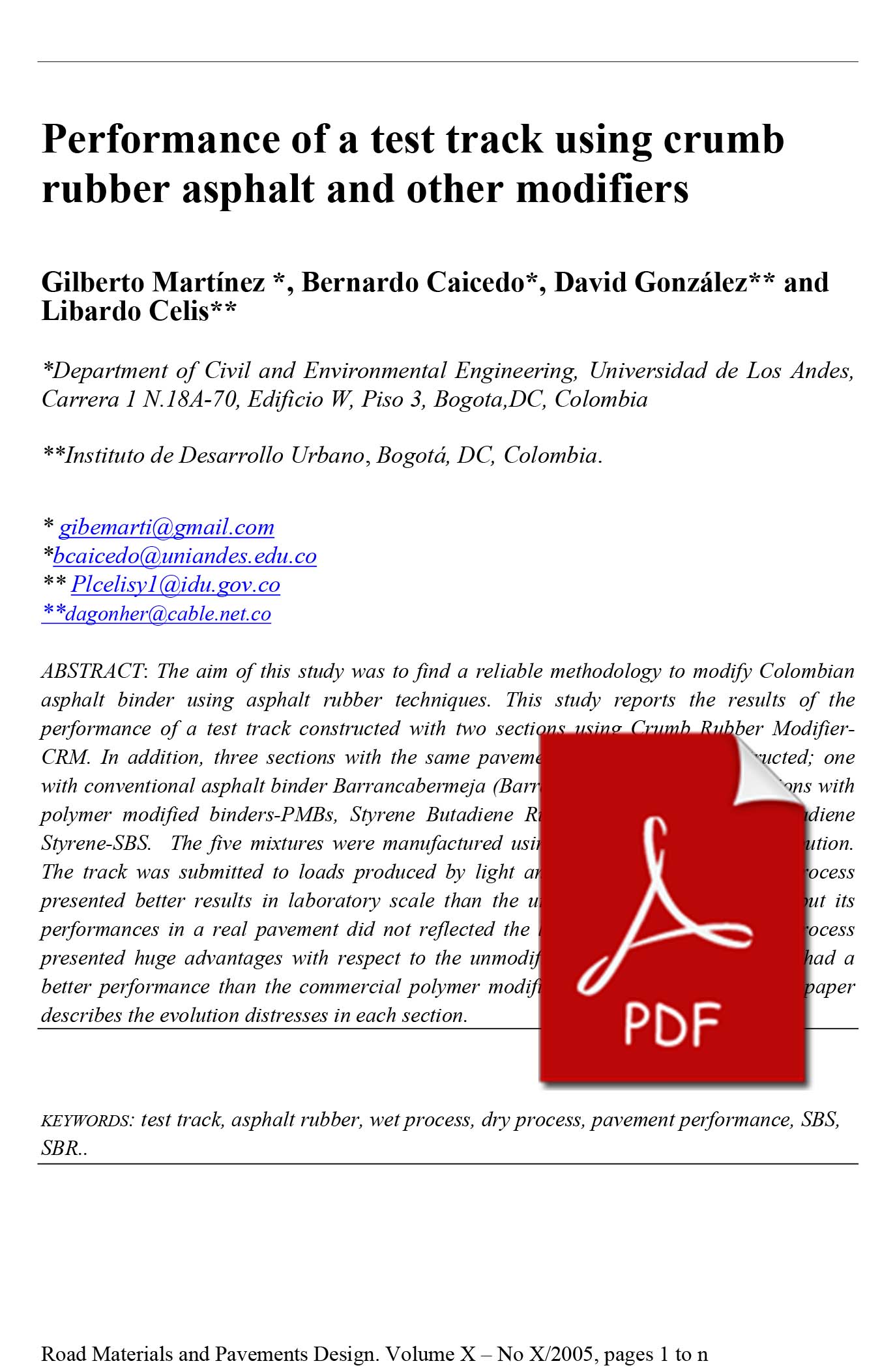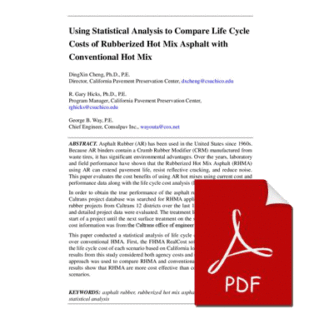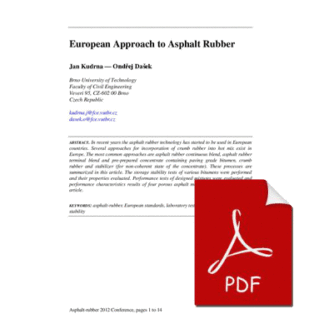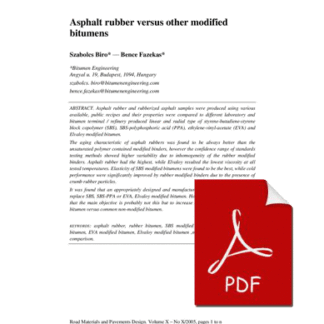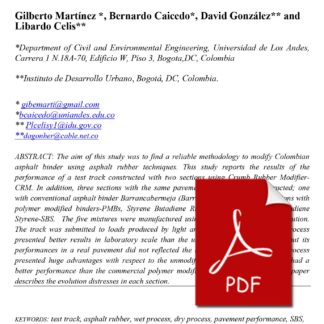Description
The aim of this study was to find a reliable methodology to modify Colombian asphalt binder using asphalt rubber techniques. This study reports the results of the performance of a test track constructed with two sections using Crumb Rubber Modifier- CRM. In addition, three sections with the same pavement structure were constructed; one
with conventional asphalt binder Barrancabermeja (Barranca) 80-100, and two sections with polymer modified binders-PMBs, Styrene Butadiene Rubber-SBR, and Styrene Butadiene Styrene-SBS. The five mixtures were manufactured using the same grain size distribution. The track was submitted to loads produced by light and heavy vehicles. The dry process presented better results in laboratory scale than the unmodified asphalt mixtures, but its
performances in a real pavement did not reflected the laboratory results. The wet process presented huge advantages with respect to the unmodified asphalt mixtures and it had a better performance than the commercial polymer modified mixes SBS and SBR. The paper describes the evolution distresses in each section.

